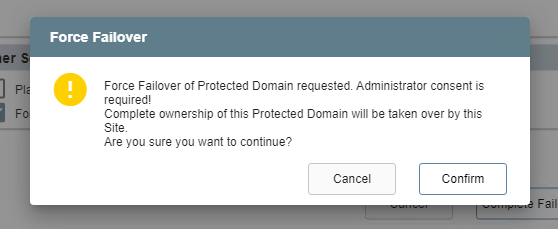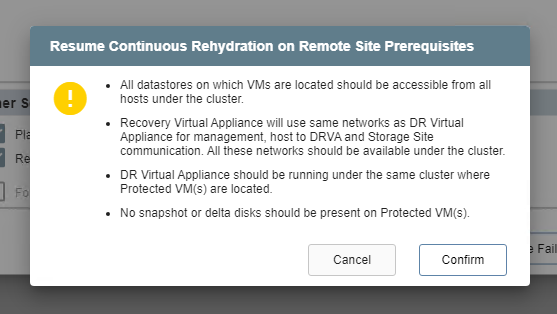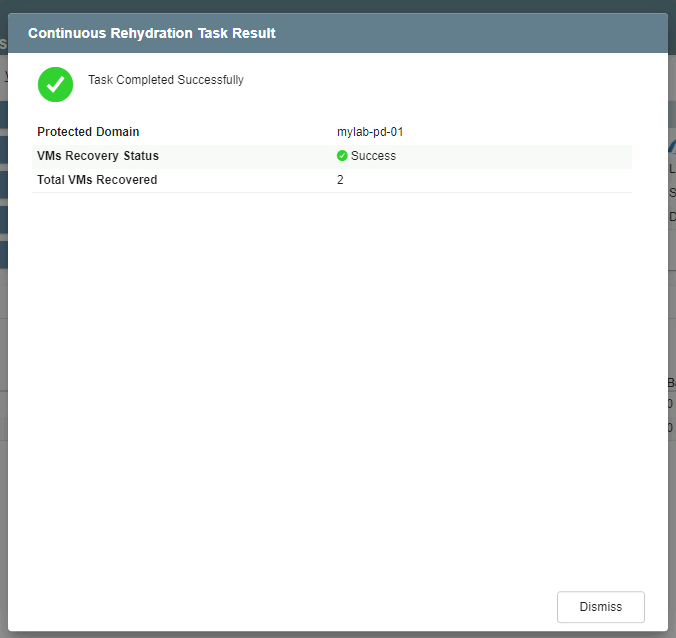Planned/Forced Failover Option
A Planned Failover option is provided to set the state of the protected site when failover is performed:
- The dialog window that appears when completing failover provides the option to indicate if the failover task is “planned” (or should be assumed to be “forced”).
- A planned failover shuts down the domain at the protected site (gracefully) before transferring ownership of VMs and data to the recovery site.
- Data at the protected site will not be deleted.
- A forced failover assumes the primary site is no longer accessible.
- Ownership of the protected domain will immediately be passed to the recovery site.

Note: Planned failover is typically used for non-disaster related events such as seamlessly shifting the location of VMs and their workloads while they continue to operate (i.e., migration).
For example, if it is known an event will occur that would produce a large workload or data burst that exceeds the resource capacity of the on-premises site, it could be beneficial to shift the VMs and their workloads to a cloud services provider capable of meeting the demand.
Another common case is moving VMs and workloads away from the on-premises site before performing major site maintenance that could potentially be disruptive or risky. After maintenance is complete, the VMs and workloads can be non-disruptively “failed-back” to the updated on-premises site.
- If failover is "forced" (the Planned Failover option is left unselected), a dialog window appears asking the user to confirm that complete ownership of the protected domain can be taken over immediately by the recovery site.

- If the Planned Failover option is selected, a sub-option will appear to perform "Continuous Rehydration" on the remote site.
- Click the Configure Recovery VA settings button to configure Continuous Rehydration settings.
- (Typically configured to run automatically upon failover.)

Note: Planned Failover using the Continuous Rehydration option is in essence “continuous failback.” Once VMs and data have been failed over to the recovery site, any new data generated there will automatically be “rehydrated” (synchronized in the background) back to the original protected site allowing for “near-zero RTO” failback.
- If the Resume Continuous Rehydration on Remote Site option is selected, a dialog window appears describing conditions necessary for the function to operate.

- After continuous failover is complete a message appears confirming completion of the task.

- When failover is complete the mode will change to “Running in Failover” and VM status will be “Recoverable.” All the VMs of the protected domain will now be running at the recovery site in the state specified by the failover runbook settings.
